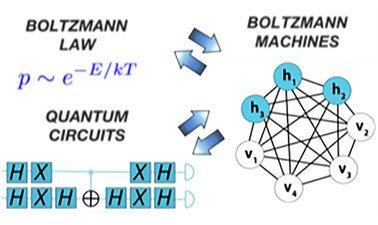MOOC List is learner-supported. When you buy through links on our site, we may earn an affiliate commission.

MOOC List is learner-supported. When you buy through links on our site, we may earn an affiliate commission.
We start from the seminal concepts of statistical mechanics like entropy, free energy and the law of equilibrium that have been developed with the purpose of describing interacting systems occurring in nature. We then move to the concept of Boltzmann machines (BM) which are interacting systems cleverly engineered to solve important problems in machine learning. Finally, we move to engineered quantum systems stressing the phenomenon of quantum interference which can lead to awesome computing power.
What you'll learn
- Boltzmann Law
- Boltzmann Machines
- Transition Matrix
- Quantum Boltzmann Law
- Quantum Gates
Syllabus
Week 1: Boltzmann Law
1.1 State Space
1.2 Boltzmann Law
1.3 Shannon Entropy
1.4 Free Energy
1.5 Self-consistent Field
1.6 Summary for Exam 1
Week 2: Boltzmann Machines
2.1. Sampling
2.2. Orchestrating Interactions
2.3. Optimization
2.4. Inference
2.5. Learning
Week 3: Transition Matrix
3.1. Markov Chain Monte Carlo
3.2. Gibbs Sampling
3.3. Sequential versus Simultaneous
3.4. Bayesian Networks
3.5. Feynman Paths
3.6 Summary for Exam 2
Week 4: Quantum Boltzmann Law
4.1. Quantum Spins
4.2. One q-bit Systems
4.3. Spin-spin Interactions
4.4. Two q-bit Systems
4.5. Quantum Annealing
Week 5: Quantum Transition Matrix
5.1. Adiabatic to Gated Computing
5.2. Hadamard Gates
5.3. Grover Search
5.4. Shor's Algorithm
5.5. Feynman Paths
5.6 Summary for Exam 3
Epilogue
MOOC List is learner-supported. When you buy through links on our site, we may earn an affiliate commission.
MOOC List is learner-supported. When you buy through links on our site, we may earn an affiliate commission.
